A useful guide
10 ranking factors Singapore companies must know to top search results
SEO | 15 min read
Not everyone can be Number One. We understand that improving is a constant goal for Singapore companies looking to rank highly in Google search. There’s still work to do, even when you’re on the first page of results and achieve a top ranking for a company, industry, and keyword search. Knowing search engine ranking factors can keep you in top form.
Each search company has its own recipe in ranking signals and priorities. Google is different from Bing, Alibaba may choose differently from Yahoo but there are some consistent rules that can optimise your website and content. And the massive popularity of Google as the #1 search engine means it’s best to use those factors to guide your search engine optimisation work.
Highlights
- Google once revealed that more than 200 factors are used by its search algorithm to rank websites. But every individual query is unique and all these factors vary with different search requirements; there are also other contributing features you’ll see below. Here, you’ll discover the 10 most important ranking factors.
- You’ll get advice and SEO tips on handling each top-ranking criteria. Learn how to create title and H1 tags, how to obtain backlinks, how to improve page experience. There is more, to help increase your organic web search traffic.
- Find out what E-E-A-T means to your business and why E-E-A-T is crucial to your company’s online presence. Even though it’s not a ranking factor, it should be a part of everything you do on the web.
Defining ranking factors
Deciding which of anything is the “best” requires evaluating many different criteria. Your favourite restaurant has various reasons why. In Google Search, these are the variables that a search engine uses to select the order of relevant, indexed results returned for any term or search query.
Ranking factors are combined and evaluated by weighting different factors for each specific search. Google won’t reveal specifically how and why search outcomes are generated, only that it happens, to ensure that users won’t get low-quality results that don’t help them with research, buying, travelling, or other tasks.
Location, relevance, trust, reviews, website keywords, and dozens of other “ranking factors” all are used to identify what answers you see. They may be different for each Internet user because of their devices (mobile phone or computer) or search word choices (tea vs. bubble tea) or search intention (gathering information vs. purchase).
These factors change with time and shifting patterns or as technologies evolve. One example is the sudden popularity of machine-learning and AI tools such as Frase, Jasper, or (more recently) ChatGPT. Changes also prevent companies and people from manipulating or “gaming” any of these ranking factors. There are penalties for overloading keywords in websites or trying to create sham content that lures search away from legitimate companies.
So what are these factors? Some experts believe there are hundreds of factors. We know some of them thanks, in part, to information that Google publicly shares. Other factors are learnt over time, about what works best for your Singapore audience and local business.
10 top Google ranking factors, according to Emerge mLab
Quality matters to Google and, in 2022, we learnt more about what that means: Quality is a blend of clicks and user visits, relevant content, trust built on user reviews and comments among other factors. And Google is the key decider of what matters most.
As the most-used search engine, not just in Singapore but throughout Asia, Google’s search is the most important. So, whether your business is a local service provider, like a dentist office seeking nearby patients or a regional provider of manufacturing materials, you need to develop content that serves those audiences in the way they decide is best for them.
Knowing where your customers are, and what they are looking for, is crucial to your success. So, we gathered findings from:
- Google Search Essentials (formerly Google Webmaster Guidelines)
- Experience from optimisation of company-owned sites and customers’ website campaigns
- Research from other SEO experts and agency studies, from global sources such as Search Engine Journal, Semrush, and others
Not listed in order of importance or alphabetical order:
1. Content and content quality
Content is a Top 3 ranking factor and includes words, photos, videos, or original material such as user comments. Different people consume content in their own ways so photos, video, review data can all help with ranking, as well as serving different visitors.
Catering to an individual’s needs shows that you’re putting the customer and prospects first, working to serve their interests, instead of just hyping your own claims.
Pro tips
- Original copy, not generated by an AI or stuffed full of keywords and nonsense. Be sure that content addresses a specific search intention (advice, purchase, etc.) with clear, accurate answers (i.e. particular products or services aimed at search about those items should be on a specific, titled page).
- Straighforward structure and design on each page makes it easy for readers to consume, and simple for Googlebot to quickly index, and understand what that page is about and its intention.
- Providing value to users may include photos or links or infographics gathered from trusted, reliable sources such as industry associations or partner websites.
- Google values in-depth, high-quality content but check your work to ensure that spelling and grammar are correct and that material is not just duplicate content scraped from another site. There may be penalties for duplicating material from another website you don’t own.
2. Content freshness
Recently updated pages indicate that you care about the website and content enough to provide new information. Pages that have been up without changes for too long can be seen as being ignored or stale. Google values fresh updates over pages that haven’t been touched for years.
Pro tips
- Search engines are always keen to get new data that might replace old or incorrect details. Is your address correct on third-party sites? What has changed for your business and what are you promoting? Are there products or services that you no longer offer? All these updates keep searchers in-the-know with current data and using popular search terms if, for example, EV is trending for “electric vehicle”.
- Look through your website and related company material to find pages that haven’t been updated in a while. See if any details have changed or providing answers to a new set of questions from users might be helpful.
- Set a schedule for refreshing your older sites to ensure they’re current and correct, with links, pricing, or contacts that are accurate.
3. Title tag
Title tags are elements of HTML code, sometimes called page titles or meta titles.
A unique, well-written title appeals to information searchers, encouraging a visit to that page by making it easy to know what they will get there. Title tags also provides a way for Googlebot to understand the content for indexing.
Page titles are an important ranking factor because they appear in a few key areas: search results, browser tabs, and social media posts.

Pro tips
- Title tags have to be brief, and written for humans instead of search engines.
- Include the single phrase that reflects each page’s overall content or value (i.e. target keyword). But don’t go overboard – keyword stuffing is detrimental to ranking.
- 1 unique idea (and title) per page avoids duplication and makes it easier for Google to understand the purpose of each page and its key concepts.
- When you have multiple pages with similar content, prioritise which one should be first and then create “canonical tags” to represent ways of sorting and reduce conflicts.
4. H1 tag
These top-of-the-page headlines, sometimes called header tags, are the material that you typically read first. However, to a search engine they are the tags that identify it as a headline and help them to evaluate and rank the page itself.
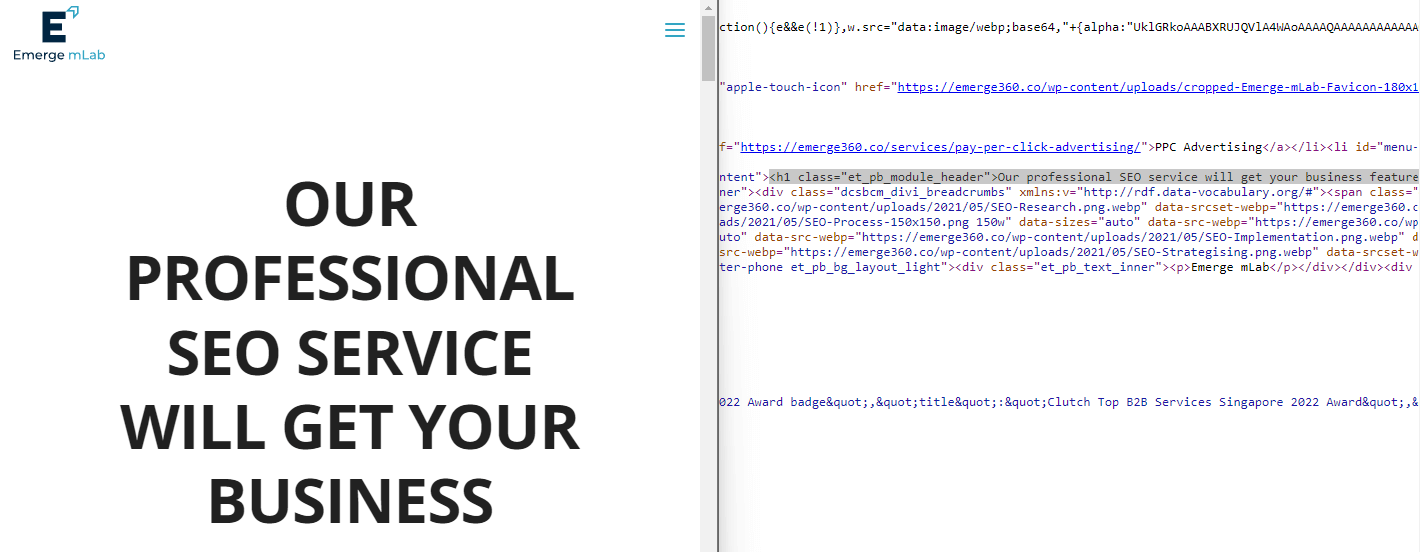
Writing H1 tags with phrases and keywords should allow both human readers, and search engine robots, to quickly understand the reason for the page and information you are providing. These tags should offer something specific or answer a question or search query in conversational language.
H2 and H3 tags are more like section headings, with more specific questions of How? Why? to explain answers in greater details.
Pro tips
- Like a headline, there should only be 1 H1 tag on a page. Having more would confuse Googlebot about the page and its purpose.
- Crafting a H1 tag is both science and art. Think about a critical question your potential client is asking – instead of the usual “me first” habit of writing about yourself. Someone with a leaky sink faucet is not searching for “Drip”, she’s searching for “Plumbing repair near me” so tags saying where you are and what you do, may help local companies perform better in a specific geographic neighbourhood.
- Make your title tag and H1 tag similar, but they should not be exact copies. Sometimes, a heading may need a few more words to motivate a reader to dive deeper into the page content.
- Stack H2 to H6 tags in descending order of importance, with most general, basic details at the end. This approach creates structure and assist with search engine understanding of the article.
5. Internal linking
Your website should start with basics and then go deeper, with more specifics, advice, and advanced information that serves multiple types of visitors, from beginner to expert. Perhaps your pages should offer guidance by saying what pages serve each level of search, with links to ordering (for customers ready to buy) or decision-making details for comparison shopping researchers.
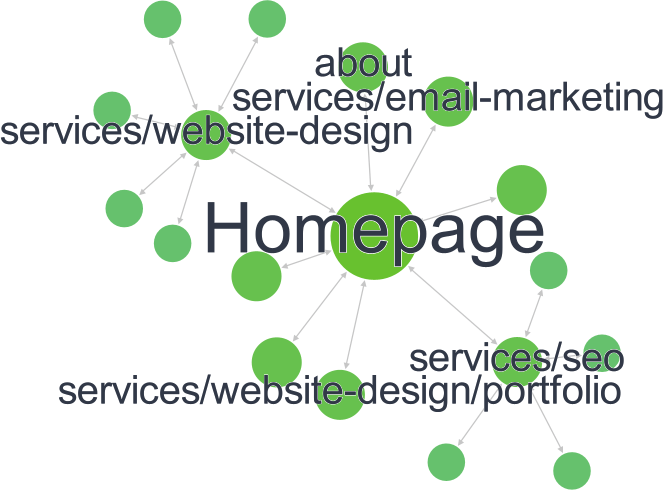
Every page should point to another related page on your site, connecting together logically and telling your business story (perhaps company history or family involvement, if that is relevant). Decide which pages emphasise brand and reputation, and which focus on particular knowledge or product offerings.
Connecting linked pages within your site increases the likelihood of visitors clicking multiple pages and getting further details, staying longer. A page containing several internal links also signals its importance to search engines.
Dwell time, i.e. time spent on your page, and the number of pages each visitor clicks are 2 probable ranking factors that you can measure and improve. Providing useful answers to questions and making them easily found leads to “sticky” websites that attract visitors and keeps them interested longer by offering related material, discounts, advice, or useful purchasing tips.
Importantly, search bots discover new content through links.
Pro tips
- Make sure all the important pages are linked and discoverable. Give them a ranking boost by sending a few more links their way, but don’t overdo it.
- Create topic clusters by linking related, high-quality pages together. They help Google figure out the level of expertise and experience of your business.
- Fix broken links. Missing pages frustrate your site’s visitors – and search engines.
6. External Backlinks
Hyperlinks that refer users from elsewhere to your sites are often cited as a top factor in ranking, according to Google, because they reflect your honest connections to review sites, partner sites, or other trusted pages.
Inbound links from other sites show that other websites value your content and will contribute to your web traffic. They also help increase brand awareness and authority. But, beware of pay-to-play links and other promises of instant ranking improvements that are easy to spot, and even easier for Google to penalise.
Pro tips
- The longer a site is online, and the larger the site’s page count, the greater score it may have for domain authority. Obtaining links from such reputable websites can benefit your site’s standing. But not just any link – the referring site content has to be relevant to yours.
- One of the easiest ways is to get your suppliers and partner companies to link to your website. Are they listing your company as authorised distributor or affiliate in Singapore? Ask them to state your website address on a seller locator page, for example.
- Links back-and-forth between sites can be helpful, as long as it’s not excessive. Build relationships with complementary businesses that you can collaborate with and explore exchanges with them. A word of caution: Overdo it and your website can be penalised.
7. Anchor text
An anchor text is a clickable word, or phrase, that includes a hyperlink to provide humans and search engine bots a clue on the information the destination page or site provides. If an outbound link consists of an image, then the alternative (alt) text of the image would be regarded as the anchor text.
Hovering a cursor over the anchor text can add relevant pop-up details and let the user preview what they might see on the linked page. It can also be an easy way to supply background information to new visitors about your company or industry.
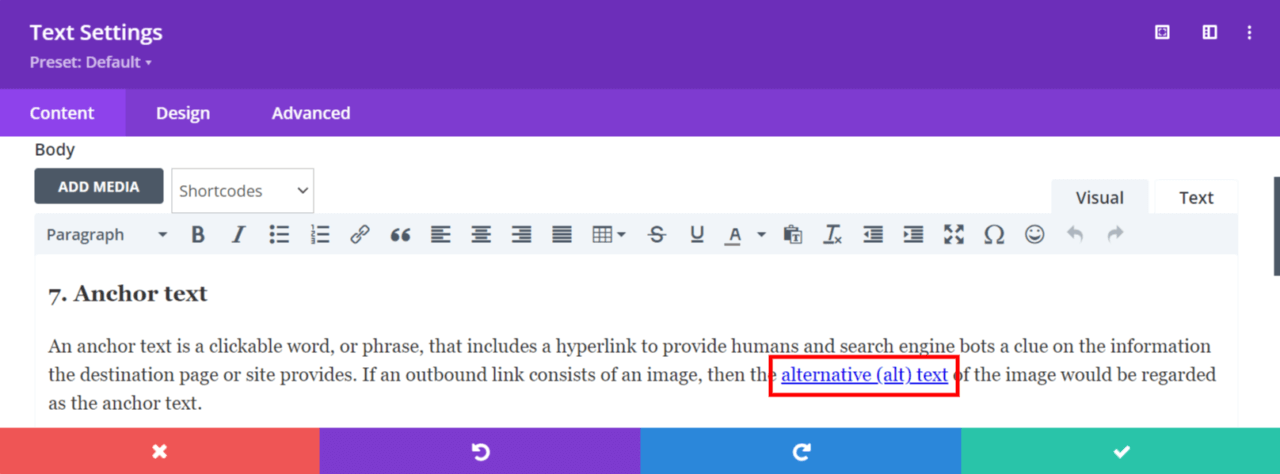
Pro tips
- Think of “why this page matters” to create a new anchor idea. Include the primary keyword of a page being linked to in the anchor text. This provides readers and search engines a better understanding of how one page supplements the other. General text like “Click here” doesn’t provide a useful hint.
- Anchor text should be descriptive, but brief. Longer anchor text may include words or phrases that Googlebot may incorrectly pick out as an identifier.
- Write naturally, for human readers. The modern search engine is smart enough to recognise synonyms. So, vary your anchor texts and word selections.
8. Page experience
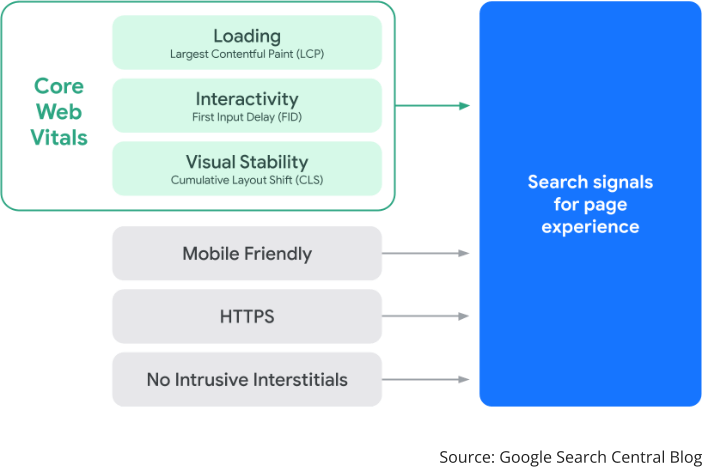
The speed of loading each page and the stability of each element (text, images, videos, embedded code) all count as important, ensuring that every web searcher has a responsive website session via desktop, laptop, phone, or tablet and across different web browsers.
Every website and content strategy has to plan for mobile users from small screen phone or tablets, plus returning customers who may resume a session from home or office using a computer. Core Web Vitals create scores for the quality of each session and can be a toolkit for improving your website.
Google measures the speed of each page and click-through rate, along with when and where users “bounce” or leave your site. Text and photo size, the absence of pop-up ads, and other design criteria are factors as well.
Being “user friendly” may involve having the HTTPS (security enabled) on your pages. Or it might be a convenience such as a retailer saving a shopping cart, a hotel company adding chatbot or talk-to-agent options. What matters to your visitors? Another example might be if a site is adaptable for low-vision or users with special needs?
Pro tips
- Based on Statista Digital Marketing Insights, 88.43% of the population in Singapore accessed the Internet on their mobile devices in 2020 and the number is set to grow. So, make sure your website design is mobile friendly.
- Assess your website’s Core Web Vitals scores to see how you can improve loading time and other page speed metrics.
- Pop-ups can encourage user engagement and help reduce bounce rate. However, indiscriminate use of such interstitials can be deemed intrusive, discouraging visitors from exploring your website further.
9. Image alt (alternative) text
Photos, illustrations, and other images on your web pages need descriptive text so they can be “heard” by visually impaired visitors who use screen readers. Sometimes, if an image fails to load, at least the alt text will tell the visitor about the image in that space.
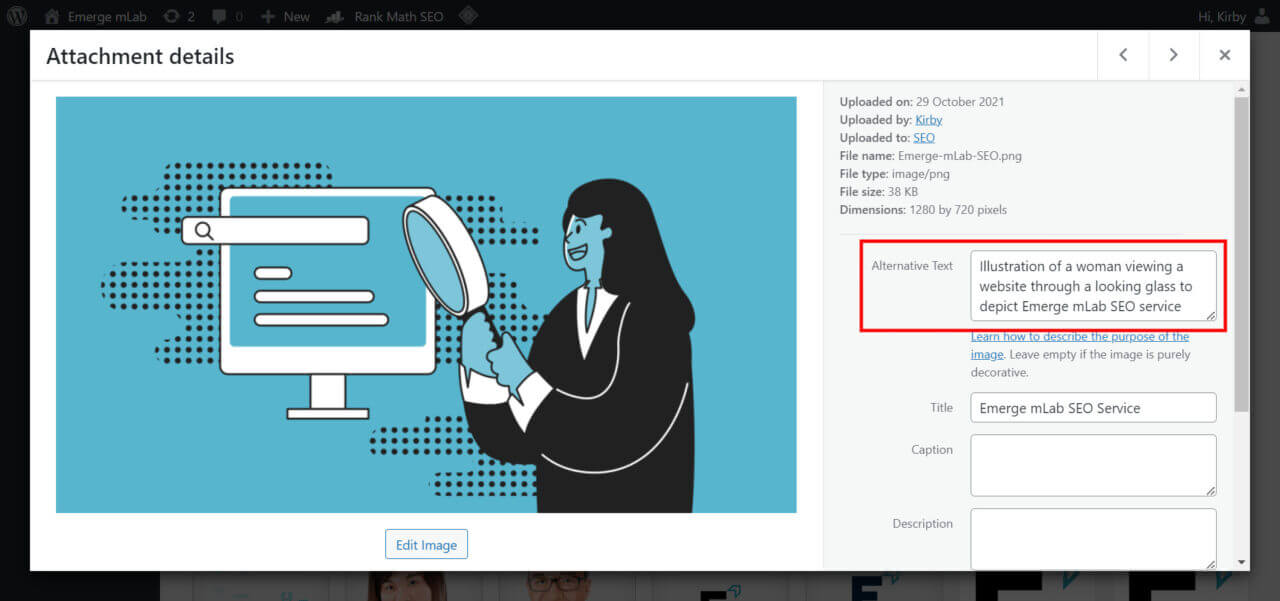
Properly written alt text (also known as “alt description” and “alt attribute”) helps web crawlers understand, index, rank, and display images for image searches.
Pro tips
- Be specific in describing the image.
- If it’s appropriate, include focus keyword in the alt attribute to show search engines contents on the page are relevant and coherent.
10. Google Business Profile
Formerly called “Google My Business”, this critical detail on your company lists the name, address, contact phone or website, relevant information such as open hours, when it is busiest. It’s particularly vital for “place-based” stores such as retailers, restaurants, services that rely on walk-in clientele.
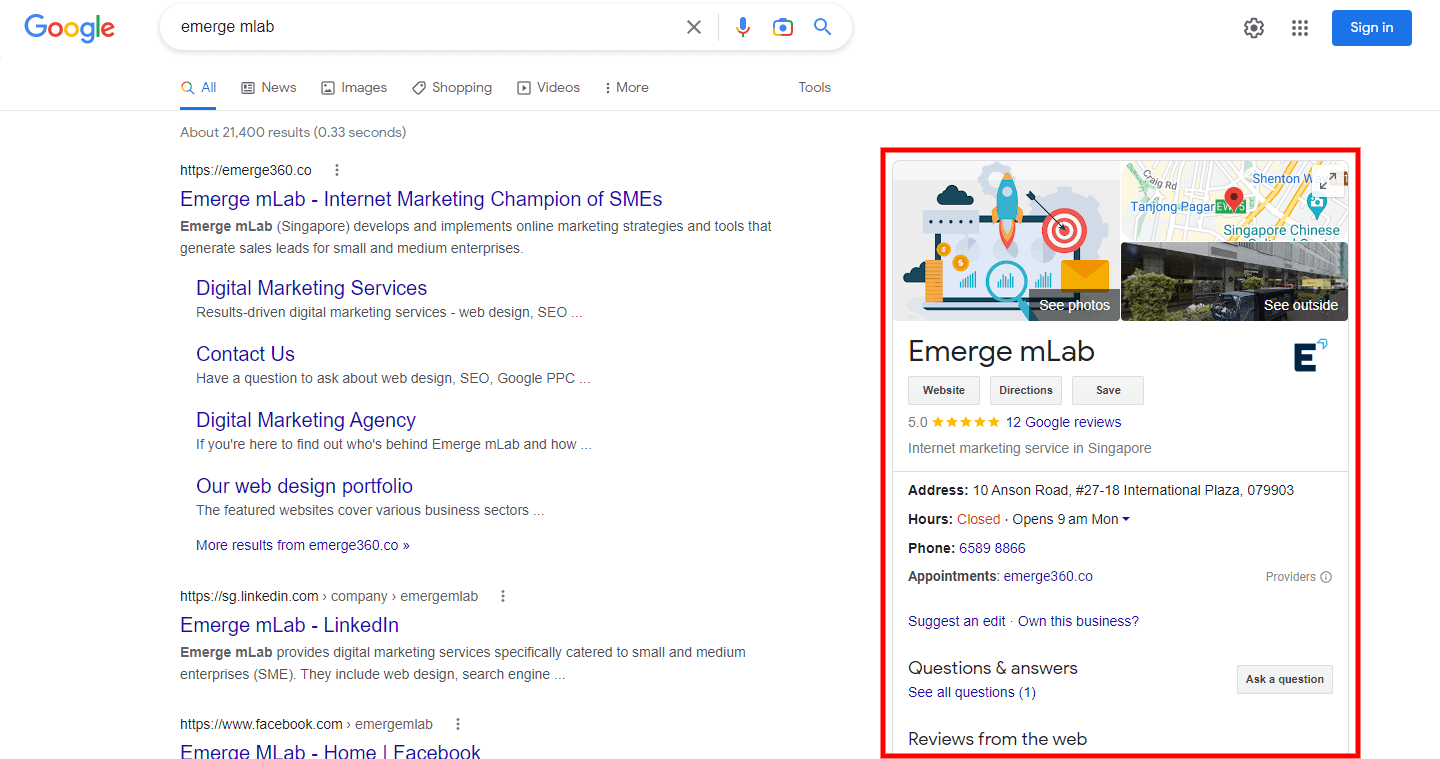
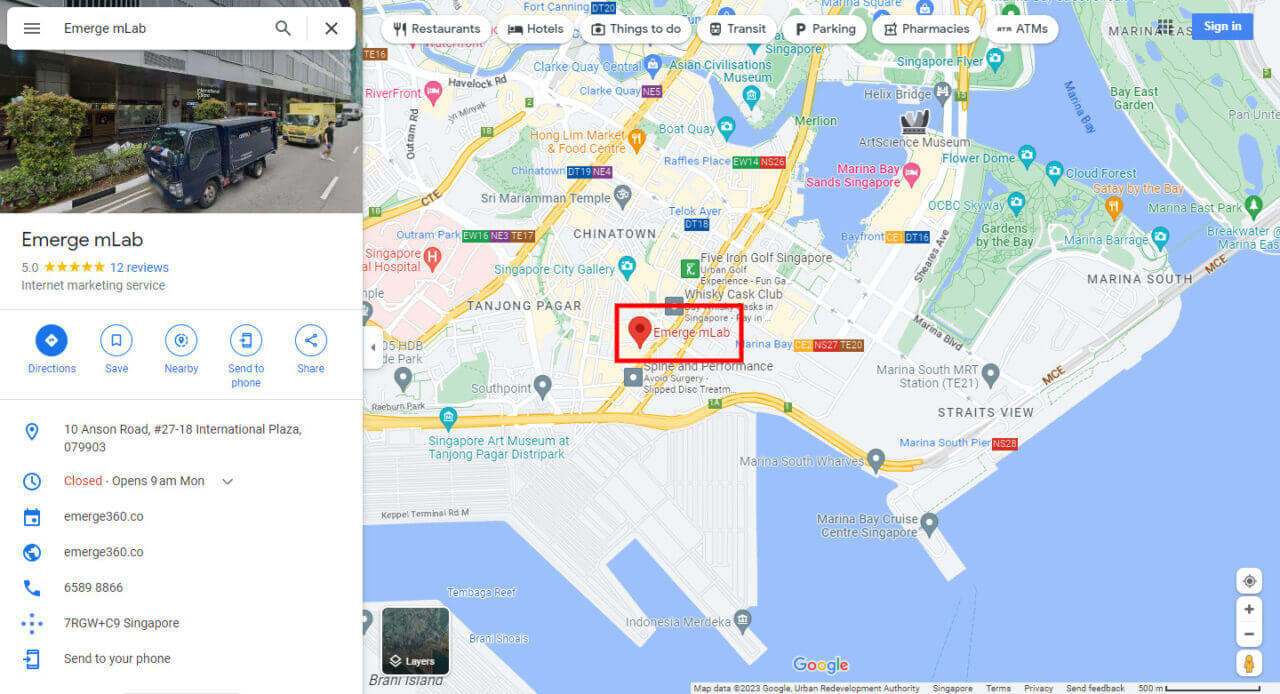
Be sure your company data is current and correct, add photos of a storefront and other details to improve current ranking data, and verify with Google. Reviews from customers, booking or appointment setting and offers for search visitors can also be part of marketing strategies via your Google Business Profile.
Pro tips
- Complete every segment of the Google Business Profile and make sure the information you provide is up-to-date.
- The business categories you select will determine whether your shop gets featured for “restaurants near me” on Google Maps.
- Upload new photos of your business, new products you’re selling, and recurring sales promotions (i.e. ladies’ night on Wednesdays or Thursdays, or live music on Friday nights).
The Importance of E-E-A-T
Google hires human search quality raters to evaluate and help improve the effectiveness of its search algorithm. Websites are assessed based on E-E-A-T – Experience, Expertise, Authoritativeness, and Trust. And the search giant emphasises trust is the most important element in E-E-A-T “because untrustworthy pages have low E-E-A-T no matter how experienced, expert, or authoritative they may seem.”
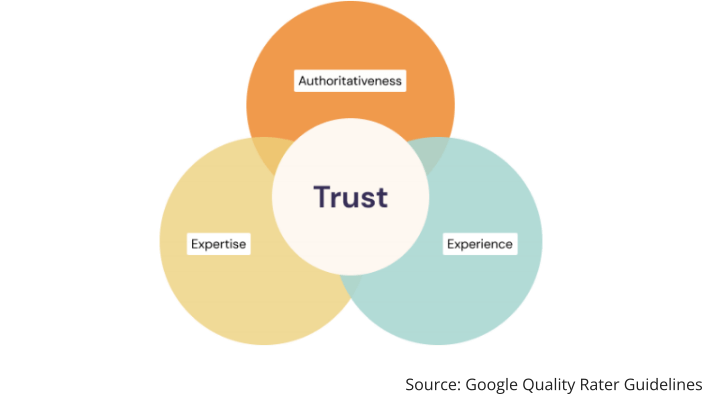
Contrary to popular belief, E-E-A-T is not a ranking factor – it offers some guidelines. But that doesn’t make it less important. When companies demonstrate E-E-A-T in the virtual space, it reflects that they are a credible resource and willing to help.
Knowing Google ranking factors gives companies an advantage over their competitors in search marketing. As you optimise your website, keep E-E-A-T in mind and pursue ways of elevating user experience. It will pay dividends.

Kirby Poh
Search marketing & web design
Spent years marketing and selling to SME customers in Southeast Asia - he knows B2B marketing. Gets a kick out of using his SEO and PPC ad abilities to make money for Emerge mLab’s clients.
Worth $675, yours for free
Get your free business SEO consultation
Hurry! We can only take 5 free requests a month.
Our SEO strategist will audit your website and draw up a to-do list to strengthen its fundamental on-page SEO elements – absolutely free.
You can give this list to your regular web developer to implement the changes. If you don’t have one, our team of SEO experts can do it for you.
Your website can move 20-50 spots up Google SERP 6-12 months after the changes are made, giving you a huge advantage over competitors who fail to implement advanced SEO strategies and techniques.
To begin, complete the form below. It could be the smartest decision you've ever made towards optimising your online presence and image branding to maximise revenue.
Hi, I’m Annie!
If you wish to speak with a person at Emerge mLab, just tap the call or WhatsApp button – I’d likely be the one picking up your call.
Otherwise, go to our “Contact Us” page to reach us in other ways.
Monday-Friday: 9 a.m.-6 p.m.
Emerge mLab
Equips businesses with powerful online lead generation capabilities
SEO guides
What is website SEO? And how can small businesses make it work?
Want to succeed in SEO? First, learn how search engines work
An SME guide to understanding Google Search algorithms (and ways to improve rankings)
33 winning “White Hat” SEO tips that boost SME websites
10 ranking factors Singapore companies must know to top search results

